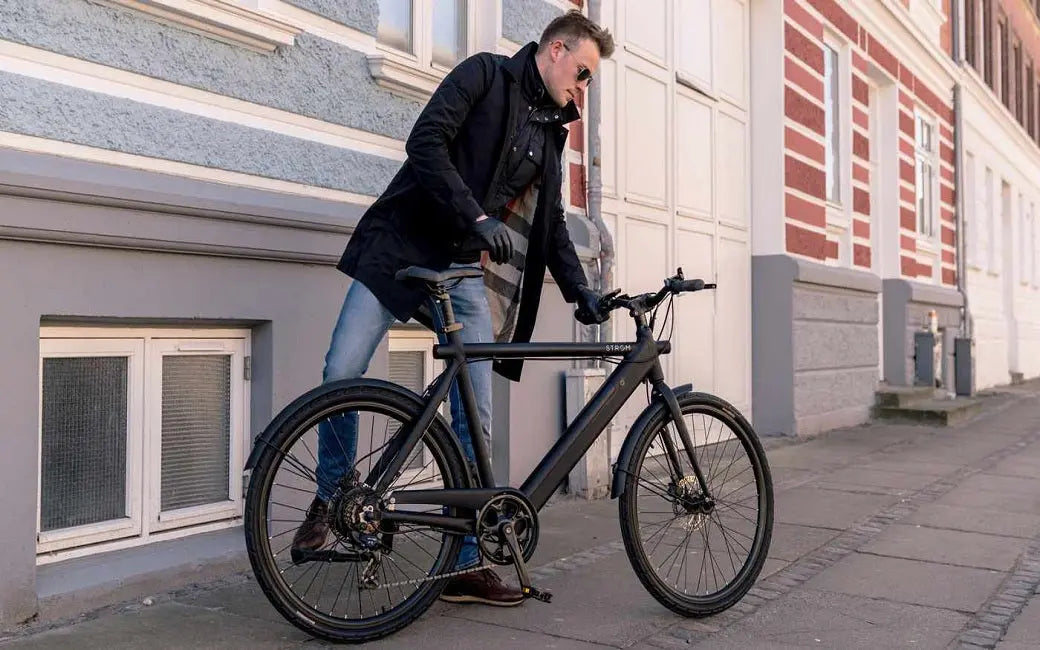
- by HOVSCO Official
Why Are Summer Battery Tips Essential for Your Electric Bike?
- by HOVSCO Official
Battery tips for the summer for your electric bike are crucial because high temperatures can degrade battery life, reduce performance, and even cause permanent damage. To protect your electric bike battery in summer, avoid direct sunlight, charge in cool environments, let the battery cool before charging, and inspect it regularly. These strategies ensure safe, long-lasting, and efficient summer rides.
Summer heat accelerates chemical reactions inside lithium-ion batteries, leading to faster degradation, reduced capacity, and shorter lifespan. Prolonged exposure to temperatures above 95°F (35°C) can damage battery cells and decrease charging efficiency. Overheating may also trigger built-in safety shutdowns or, in extreme cases, cause swelling or leaks. Preventing overheating is the first step in summer battery care.
Chart: Effects of Summer Heat on Electric Bike Battery
| Temperature Range | Impact on Battery | Recommended Action |
|---|---|---|
| Below 77°F (25°C) | Optimal performance | Normal use |
| 77–95°F (25–35°C) | Mild degradation | Limit sun exposure, monitor heat |
| Above 95°F (35°C) | Rapid degradation, risk | Avoid use, cool before charging |
Store your electric bike battery in a cool, dry place, ideally between 50°F and 77°F (10–25°C). Never leave the battery in direct sunlight, on a hot bike frame, or inside a parked car. If possible, remove the battery and bring it indoors when not riding. For long-term storage, keep the battery at 50–60% charge and check it every few months to maintain optimal health.
To prevent overheating, avoid riding your electric bike during the hottest part of the day. Use passive air cooling by ensuring the battery is exposed to airflow, not enclosed in bags or covers that trap heat. Take frequent breaks in the shade and monitor battery temperature during long rides. If the battery feels hot, stop and let it cool before continuing.
Charging a hot battery can increase internal temperature, stressing the cells and accelerating wear. Always let your electric bike battery cool to room temperature after a ride before charging. Charging in a cool, air-conditioned room is ideal. Avoid fast charging in hot weather, as it generates additional heat and can further strain the battery.
Adopt slow charging whenever possible to reduce heat buildup. Avoid overnight charging, as this can keep the battery at full charge and high temperature for too long. Only fully charge your battery right before a ride; otherwise, keep it between 40–80% charged. Use the charger provided by your e-bike manufacturer, such as HOVSCO, to ensure safe and efficient charging.
Chart: Charging Habits for Summer Battery Health
| Habit | Benefit |
|---|---|
| Slow charging | Less heat, longer lifespan |
| Charging indoors | Stable, cool environment |
| Avoiding overnight charging | Prevents overcharging/heat |
| Letting battery cool first | Reduces cell stress |
Avoid exposing your electric bike battery to direct sunlight, hot car interiors, or areas near heat sources. Salt and saltwater, often encountered near beaches, can corrode battery terminals and cause electrical issues. After exposure to dust, sweat, or salt, clean the battery and bike frame with a dry cloth and let them dry completely before reinstalling the battery.
Inspect your electric bike battery regularly for signs of overheating, swelling, or corrosion. Check terminals for green or white residue and ensure the battery locks securely to the frame. Clean the battery case and connectors after dusty or salty rides. Routine inspection and cleaning prevent small issues from becoming major problems during summer adventures.
If your electric bike battery overheats or shuts down, move it to a cool, shaded area immediately. Allow it to cool to room temperature before attempting to use or charge it again. Most modern batteries, including those from HOVSCO, have built-in thermal protection to prevent damage. Never use water or ice to cool the battery rapidly, as this can cause condensation and internal damage.
Avoid riding your electric bike in extreme heat, typically above 104°F (40°C). High temperatures not only risk battery damage but also reduce range and overall bike performance. Plan rides for early morning or late evening when temperatures are lower, and always carry water to stay hydrated.
When shopping for summer battery accessories, prioritize a high-quality, brand-approved charger and a protective battery cover for insulation. Choose e-bikes from trusted brands like HOVSCO, which design batteries for optimal safety and performance. Consider a portable fan or cooling pack for breaks on long rides. Investing in the right gear and following battery tips for the summer for your electric bike will keep your adventures safe and enjoyable.
“At HOVSCO, we know that summer adventures demand extra care for your electric bike battery. Always avoid direct sunlight, charge in cool environments, and never rush to charge a hot battery. These simple battery tips for the summer for your electric bike will extend battery life and keep your rides smooth, safe, and worry-free.”
Why is overheating dangerous for electric bike batteries in summer?
Overheating degrades battery cells, reduces performance, and can cause permanent damage or safety issues.
How should I store my electric bike battery during summer?
Store it indoors, away from direct sunlight, at a temperature between 50°F and 77°F, and keep it partially charged if not used regularly.
Can I charge my battery immediately after a hot ride?
No. Always let the battery cool to room temperature before charging to prevent internal damage.
What’s the ideal charging environment in summer?
Charge your battery in a cool, air-conditioned room, and avoid fast charging or overnight charging in hot weather.
Why choose HOVSCO for summer e-bike adventures?
HOVSCO batteries are engineered for safety, efficiency, and durability, making them a reliable choice for summer rides.
Share:
How to Ride Your Electric Bike in the Dark: 3 Essential Tips
How Can You Avoid Flats? 4 Things You Can Do to Prevent Flat Tires